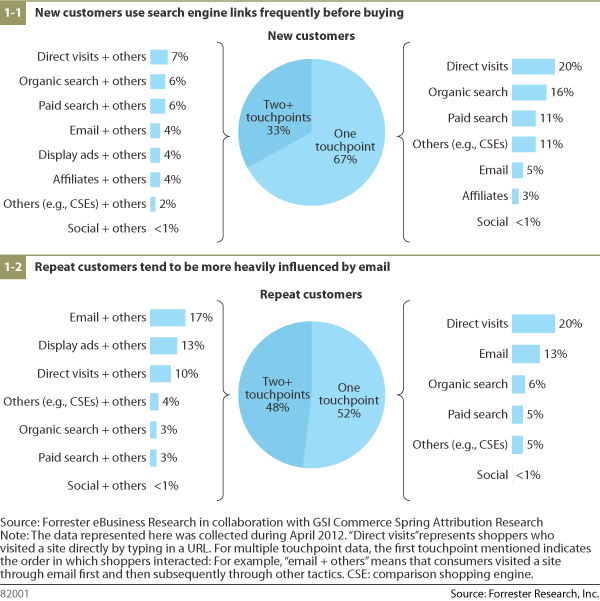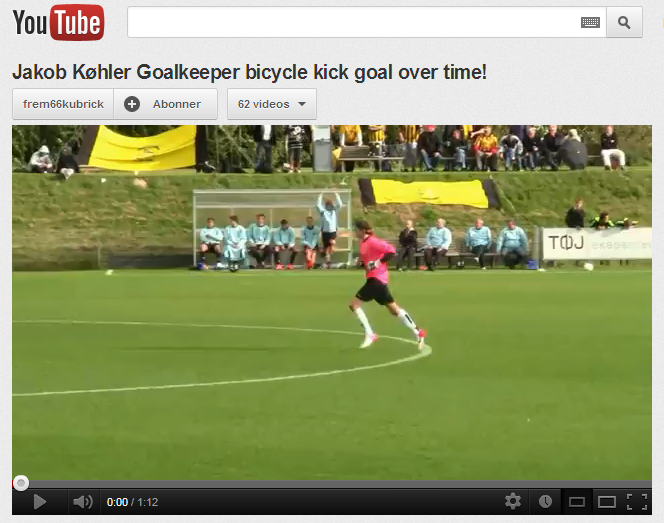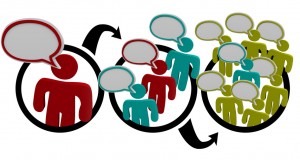One might think that due to the rise of social media and the increasing number of  shoppers using mobile and tablet devices to access content, core elements of e-marketing such as email could become outdated.
shoppers using mobile and tablet devices to access content, core elements of e-marketing such as email could become outdated.
From “The Purchase Path Of Online Buyers In 2012” I have picked out a couple of interesting results, that tell us otherwise.
One of the key take-aways is, that email matters most for repeat customers. It “is an extremely effective tactic for driving sales from repeat shoppers” – in fact 30% of transactions started with a click on an email from the retailer. Another key point is, that paid search matters most for new customers. They are much more influenced by paid search than repeat buyers – search was “the single most important tactic for new customers; 39% of transactions by new customers started with clicks from paid or organic search results”. The last key point, I would like to put forward, is that social tactics are not meaningful sales drivers. Less than 1% of transactions, for both new and repeat customers, could be traced back to social links. Nevertheless customers report that they enjoy seeing social network links and posts that are about specific products. The weak connection with actual influence on sales is mostly due to the fact, that these tactics are at the top of the customer decision funnel, furthest away from the purchase decision. Most likely these tactics require a longer measurement period than the 30-day period of this report.
What I get from this is that although social is important, it should not be overestimated and it should not neglect tools as search and email, that has a strong impact on sales. Most surprisingly email marketing is still very powerful, and email optimization along with search engine optimization deserve a lot focus.
The social networks did not kill the email marketing industry after all.
At least not yet!



